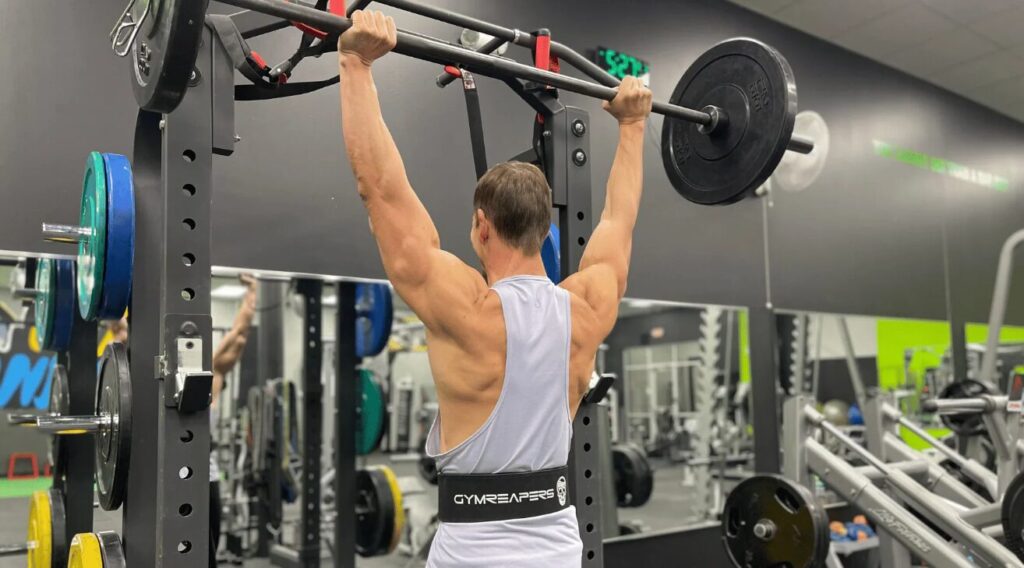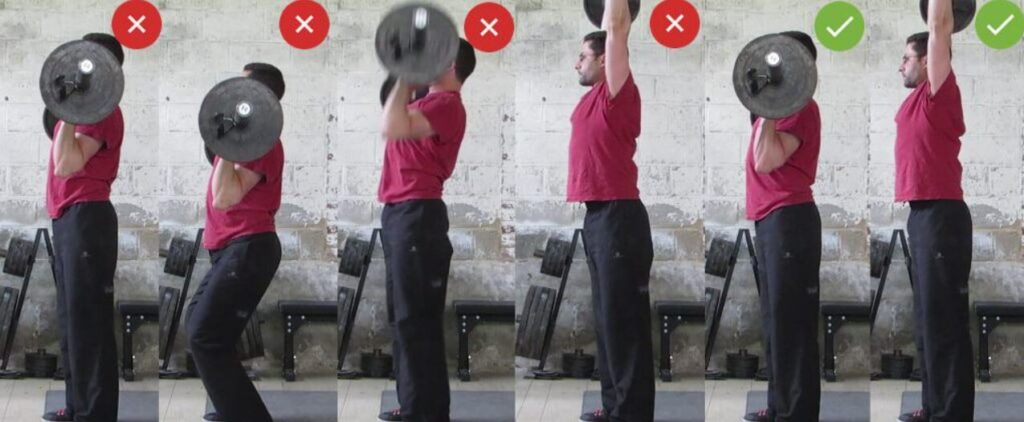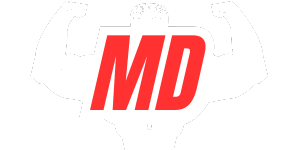You’ve likely seen the overhead press performed at your gym, or maybe you’ve attempted it yourself. This foundational strength movement transforms shoulders, builds impressive upper body power, and enhances functional fitness when executed properly. Yet many lifters struggle with stalled progress or risk injury through common technical flaws.
Whether you’re pressing an empty bar or approaching bodyweight, the techniques and progression strategies you’ll discover next will revolutionize this classic lift in your training program.
What Is the Overhead Press?
The overhead press stands as a cornerstone movement in strength training programs worldwide. This fundamental exercise involves lifting a weight directly over your head while standing, engaging multiple muscle groups simultaneously. When performing the overhead press, you’ll primarily target your deltoids, triceps, and upper chest while your core stabilizes your body throughout the movement.
Barbell training enthusiasts particularly value the overhead press for its ability to build raw upper body strength and power. Unlike machine alternatives, the free-weight overhead press demands total body coordination and control.
Maintain proper alignment from your feet through your shoulders as you press the weight upward in a vertical path. This thorough engagement makes the overhead press not just a shoulder exercise, but a full-body strength developer.

Proper Technique for Safe and Effective Lifting
Because proper form determines both safety and results, mastering the overhead press technique should be your top priority before adding significant weight. Start with feet shoulder-width apart and grip the bar just outside shoulder width. Brace your core stability by tightening your abs and glutes before initiating the movement.
As you press, keep the bar path close to your face, moving it straight up rather than around your head. Position your elbows slightly in front of the bar during the initial drive. Don’t let your lower back hyperextend. This common error places unnecessary stress on your spine.
At the top position, fully lock out your arms with the bar directly over your shoulders. Proper pressing form includes a straight wrist position throughout the entire movement to prevent strain.

Benefits of the Overhead Press
Now that you understand proper technique, let’s examine why overhead pressing deserves a place in your training program. This compound movement delivers impressive functional strength gains, targeting multiple shoulder muscles simultaneously while developing your triceps and upper chest.
You’ll notice improved posture as your upper body stability increases through consistent overhead strength training. Your core will become more engaged and controlled, as it must stabilize your body throughout each press repetition.
The overhead press translates exceptionally well to athletic performance, whether you’re competing in sports or pursuing other lifting goals. The vertical pressing pattern mimics many real-world movements, making it one of the most practical exercises for developing usable strength that serves you in daily activities and specialized training alike.

Common Mistakes to Avoid
While working towards overhead press mastery, you’ll need to avoid several critical errors that can sabotage your progress and potentially lead to injury. The most common mistake is flaring your elbows too wide, which places unnecessary stress on your shoulder joints. Keep your elbows at a 45-degree angle to maintain proper weightlifting form.
Another error is excessive lower back arching, which compensates for limited shoulder mobility but can lead to spinal issues. Instead, brace your core and maintain a neutral spine position throughout the movement.
Using an uneven grip or inconsistent bar path will create imbalances and reduce power transfer. Finally, don’t skip proper warm-ups and mobility work. Cold shoulders are injury-prone shoulders. Addressing these form deficiencies will greatly improve your pressing power and longevity.
Tips for Progression and Plateaus
When your overhead press progress stalls, you’ll need strategic approaches rather than simply adding more weight. Start by examining your technique. Efficient pressing progression depends on proper form. Focus on core bracing throughout the movement to create a stable foundation for overhead strength.
Try implementing micro-loading, adding just 1-2.5 pounds per session instead of larger jumps. Incorporate variations like push press or seated press to work through sticking points and stimulate different muscle fibers.
Consider programming changes, too. Try pressing first in your workout when you’re fresh, or adjust your volume with techniques like 5×5 or 3×8 protocols. Recovery matters equally; guarantee adequate sleep and nutrition to support your pressing development.
Remember that plateaus are normal, but patient, consistent work will yield results over time.
Overhead Press Variations for Different Goals
Beyond overcoming plateaus, selecting the right overhead press variation can dramatically accelerate your progress toward specific fitness objectives. The seated overhead press minimizes lower body involvement, isolating your shoulders for focused development. If you’re working on muscle imbalances, dumbbell presses force each arm to work independently, revealing and correcting strength disparities.
For athletes needing explosive power, the push press incorporates leg drive to handle heavier loads, translating to improved performance. Advanced lifters might explore the behind-the-neck press, though this requires excellent shoulder mobility.
When implementing these overhead press variations, remember that proper form remains paramount. Start with lighter weights when trying new variations, and you’ll discover which shoulder press tips best align with your specific training goals.
Frequently Asked Questions
How Often Should I Include Overhead Presses in My Training Program?
You should include overhead presses 1-2 times weekly in your training program. Allow 48-72 hours between sessions for proper shoulder recovery while still providing enough stimulus for strength and muscle development.
Can Overhead Presses Help Improve My Bench Press Strength?
Yes, overhead presses can boost your bench press strength. They develop your shoulders and triceps, which are essential for bench pressing. You’ll also gain upper body stability that transfers directly to your bench performance.
Should I Press With Thumbs Wrapped or Use a Thumbless Grip?
Always use a wrapped thumb grip for safety. A thumbless grip (suicide grip) increases the risk of dropping the bar. Prioritize your safety when pressing overhead to prevent potential serious injuries.
How Wide Should My Grip Be for Optimal Pressing Mechanics?
Place your hands just outside shoulder width for ideal pressing mechanics. This grip allows for a natural elbow path and maximizes your leverage while keeping the bar in a straight vertical line.
Are Overhead Presses More Effective Standing or Seated for Shoulder Development?
Standing overhead presses offer more complete shoulder development by engaging stabilizers and requiring core activation. However, seated presses allow for more isolation and potentially heavier weights with reduced lower body involvement.



